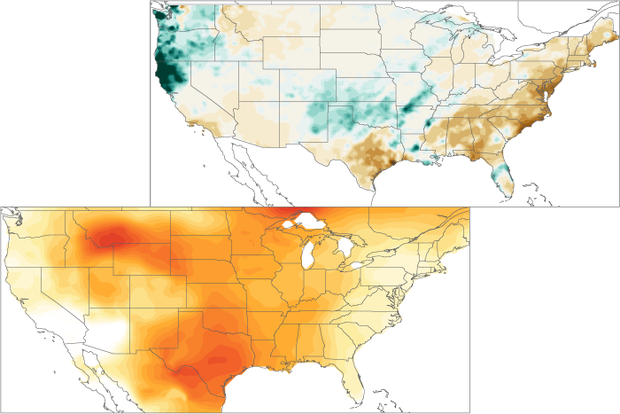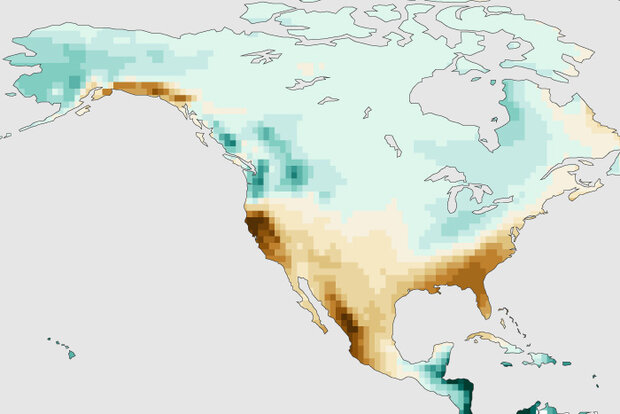ENSO Blog
La Niña conditions emerged in the tropical Pacific in December. There’s a 59% chance La Niña will persist through February–April, followed by a 60% chance of neutral conditions in March–May. Read on for the recent observations that led us to declare the (long-awaited) onset of La Niña and lots of details for current and potential upcoming conditions.
Just the facts, ma’am
A quick briefing, if you’re just joining us—La Niña is one phase of the El Niño/Southern Oscillation (ENSO), a pattern of sea surface temperature and atmospheric changes in the tropical Pacific Ocean. La Niña’s signature is cooler-than-average surface water in the east-central Equatorial Pacific, while its counterpart…
Read article
There’s a 59% chance that weak La Niña conditions will develop shortly. This is very similar to last month’s estimate, just applied to November–January. It’s true; if you read last month’s post, you can pretty much carry that information over to this month. However, we have lots of fun sciency details to talk about this month, so stick around!
The office holiday party
La Niña, the cool phase of the El Niño/Southern Oscillation (ENSO), is a coupled ocean-atmosphere pattern in the tropical Pacific Ocean. To qualify as La Niña conditions, we need to see (1) surface water in the tropical Pacific that is at least 0.5 °C (just shy of 1˚F) cooler than the long-term average (long-term=1991–202…
Read article
Although it’s taking its sweet old time to get going, a weak La Niña, the cool phase of the El Niño/Southern Oscillation (ENSO), is expected to develop this winter. Much like I did last November, I thought it would be a good time to delve into how these expected tropical Pacific conditions might influence the pattern of precipitation over North America this winter. After all, ENSO—the entire El Niño and La Niña system—is the single most predictable influence on year-to-year differences in average winter precipitation across the United States. Without further ado, let’s get to it!
Break out the models!
Last November we were anticipating a big El Niño to do…
Read article
There’s a 57% chance La Niña will develop soon. This is late for La Niña to arrive, and it’s very likely to be a weak event at most. However, even a weak event can influence temperature, rain, and snow patterns across the world. Today, we’ll take a tour through current conditions in the tropical Pacific and consider some of the things that might be interacting with La Niña’s development.
First things first: what’s ENSO, and why do we care so much about it?
La Niña, the cool phase of the El Niño/Southern Oscillation (ENSO), features cooler-than-average surface temperature in the tropical Pacific Ocean. The warm phase, El Niño, includes warmer-than-average surface waters, and ENSO-neutra…
Read article
I’ll cut to the chase. Spooky season is coming to an end, and people are beginning to set their sights on winter. And when it comes to winter, there’s a big, white, abominable “elephant” in the room. Snow. While you’re not going to find a seasonal snowfall prediction here at the ENSO Blog, what we can do, given that La Niña is favored this winter, is revisit the historical relationship between La Niña and snow across North America. Just promise to not take it out on your lowly ENSO Blogger if history suggests more of a winter nightmare than a winter wonderland.
Haven’t you covered this before?
Yes…and no. Back in 2017, Stephen Baxter did indeed write a very popular post on snow and La …
Read article




